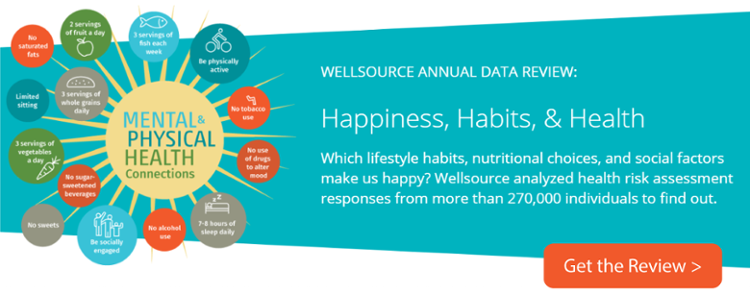Mental illness is among the most common health conditions in the United States. 1 in 5 U.S. adults live with a mental illness. And since the pandemic, the importance of recognizing mental and emotional well-being became even greater. In the first year of the pandemic, the global prevalence of anxiety and depression increased by 25% according to a brief released by the World Health Organization. Individuals and whole populations are learning to cope with increased stress, uncertainty, and isolation.
Addressing mental health issues with health and wellness programs starts with understanding your population’s total health and well-being, including their mental, emotional, and social health. In this article, we will explore how HRA data can help unlock critical insights into mental health—and inform more engaged interventions.
Client Story: Using HRA Data to Boost Enrollment in Mental Health Programs
Independent Health, a local health plan in Western New York with over 40 years in business, provides resources and value-added services designed to keep individuals healthy, informed, and engaged—and that includes mental and emotional wellness.
One program Independent Health offers to Medicare members targets at-risk individuals with community-based programs designed to reduce feelings of loneliness and depression.
Prior to partnering with Wellsource for their health risk assessment (HRA) needs, Independent Health used claims-based data to identify at-risk individuals. The Wellcomplete HRA for Medicare populations was able to offer greater insights into their population so that they could further target their program outreach.
"Within one month of pivoting our approach to using HRA data within our identification algorithm, we experienced a 300% increase in member acceptance of the program referral.”
-Saralin Tiedeman, MS/OT, Senior Healthcare Innovator at Independent Health.
The Connection Between Mental and Physical Health
Mental health issues have long been associated with physical well-being. One can greatly impact the other. Depression increases the risk for many types of physical health issues, such as diabetes and heart disease. And the presence of a chronic condition can also increase the risk of mental illness.
In 2019 Wellsource produced an annual data review showing how mental health can be measured using HRA data, using the HRA results of more than 270,000 individuals. The HRA asks a number of questions about mental health, resilience, outlook on the future, and social support. Here are some highlights of the physical factors that relate to mental health and happiness within the data:
- The right amount of sleep. The happiest people in the dataset slept 7-8 hours. Any more or less sleep increased the odds of being unhappy by more than 200%.
- Well-rounded nutrition. Eating at least two servings of fruits and three servings of vegetables per day increased the odds of being happy.
- Less sitting. The happiest people sat, on average, two hours less per day than the unhappiest individuals.
- Regular exercise. The happiest people exercise an average of one hour and 42 minutes a day.
- Smoking and drinking. The happiest people were four times less likely to report using tobacco products compared to those who reported being unhappy.
- Regular physical activity. Exercise has been shown to reduce symptoms of depression, and in the Wellsource dataset, every hour increase of physical activity per day increased the odds of being happy by 22%. Sitting less also increases happiness, for every additional hour of sitting per day, the odds of being happy decreased by 11%.
Self-reported population health data, such as that collected by a quality HRA, provides critical insights into otherwise difficult-to-quantify aspects of mental and emotional wellbeing. Claims data and medical charts might not tell a full story of a person’s lifestyle habits, mental health status, or readiness to take action. Self-reported data—like all data—is subject to bias. But research has shown that self-reported health and lifestyle data can have high reliability. Minimize bias in self-reported data by:
- Using an NCQA-certified HRA that asks evidence-based questions.
- Ensuring strong security and privacy practices are in place.
- Adhering to health literacy and health standards.
By using an HRA to gather data right at the source—from the individual— wellness and population health professionals can shape more impactful, timely programs.








